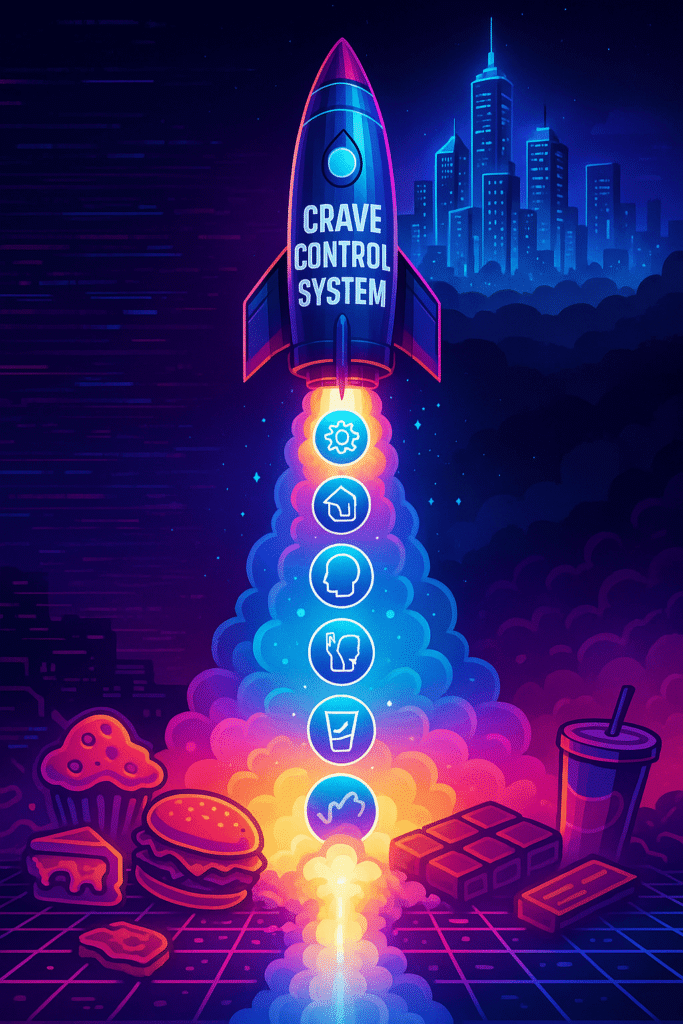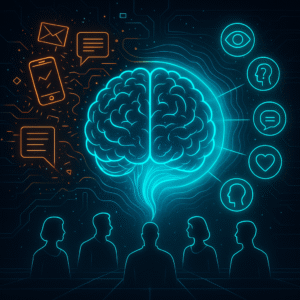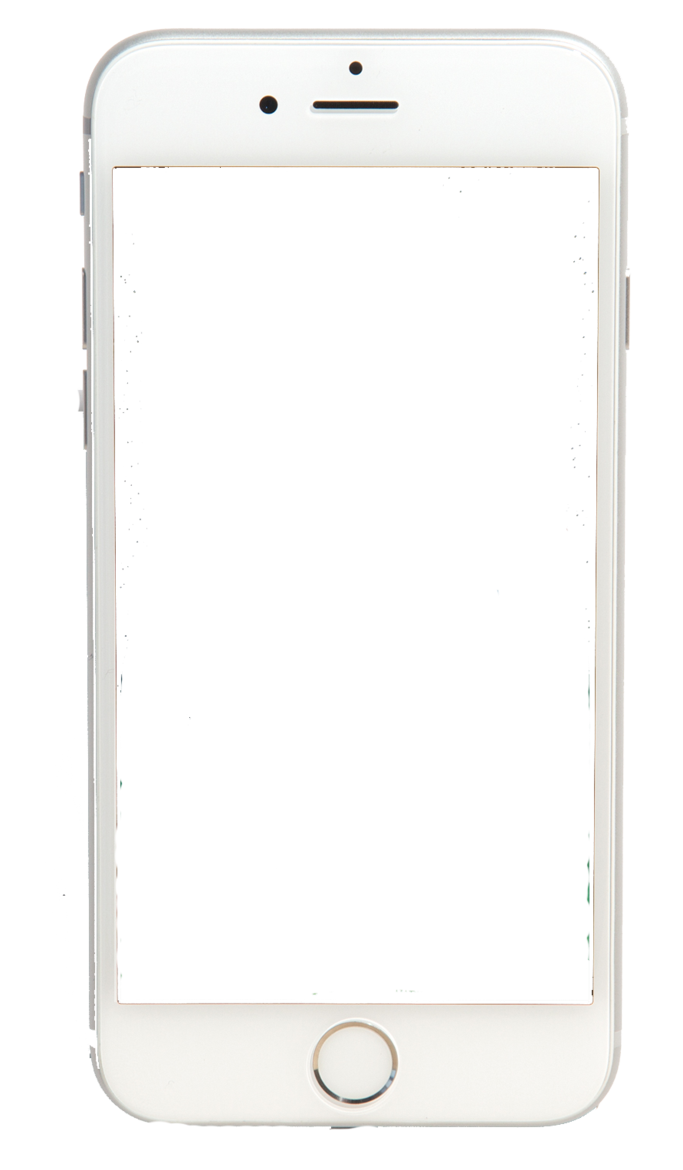Getting back on track with diet after derailment comes down to three game-changers: implementing one micro-habit instead of a complete lifestyle overhaul, engineering your surroundings to automatically steer you toward nutritious choices, and measuring success through multiple health markers rather than obsessing over the scale. This neuroscience-backed method tackles the real culprits—hijacked dopamine pathways, disconnected body signals, and black-and-white thinking patterns.
Let’s be real for a second: remember that scene in Willy Wonka where Augustus Gloop absolutely cannot resist diving into the chocolate river? Yeah, we’ve all been Augustus at some point.
Maybe your “chocolate river” was that all-inclusive resort buffet last month. Or perhaps it was the three weeks of holiday parties where saying “no thanks” to grandma’s cookies felt impossible. Whatever derailed your healthy eating, you’re sitting here now wondering how the heck you press the reset button.
Here’s what 30+ years of behavioral science research tells us (backed by pioneers like Dr. BJ Fogg at Stanford, James Clear of Atomic Habits fame, Dr. Brian Wansink’s groundbreaking work at Cornell, and Dr. Wendy Wood’s habit research at USC): sustainable dietary changes aren’t about superhuman discipline. They’re about understanding your brain’s wiring and working with it instead of against it.
The truth? Millions of people struggle with how to get back on track with diet after life throws them off course. Between unpredictable schedules, a food environment designed to trigger overconsumption, and the emotional complexity of modern living, maintaining consistent eating patterns is genuinely challenging.
The Real Reasons Your Eating Goes Off the Rails
Your Brain Gets Hijacked
Here’s what’s actually happening in your skull when you polish off that entire bag of chips: ultra-processed foods trigger the exact same neural pathways as addictive drugs. According to neuroscience research in Neuroscience & Biobehavioral Reviews, these engineered food products literally commandeer your reward circuitry, manufacturing cravings that have nothing to do with genuine nutritional needs.
This brain hijacking explains why do I eat when I’m not hungry—you’re not lacking willpower, your dopamine system is screaming for another hit. Understanding this biological reality is crucial for anyone figuring out how to get back on track with diet after processed foods have rewired their reward response.
Related Article: Good Dopamine vs Bad Dopamine
You’ve Forgotten How to Listen to Your Body
Most of us lost our internal GPS somewhere between childhood and adulthood. Diet culture, arbitrary meal times, and years of ignoring “I’m full” signals have severed the connection between your brain and stomach. Instead of eating when genuinely hungry and stopping when satisfied, you eat because it’s noon, or because the food is there, or because everyone else is eating.
The Perfectionist Trap
There’s this toxic mental trap that ruins more progress than almost anything else: treating eating as either flawless or catastrophic with zero middle ground. You have one slice of pizza and your brain declares “Well, the day’s ruined—might as well eat the entire large.” Psychologists call this the “what-the-hell effect,” and it’s a productivity killer for anyone trying to build sustainable habits.
Understanding these psychological landmines is half the battle. Now let’s talk about strategies that actually work with your neurology instead of fighting it.
Read More: How to Overcome Perfectionism
How to Get Back on Track with Diet: 6 Proven Strategies
1. The Micro-Commitment Strategy
Here’s where most people completely sabotage themselves: they try changing everything simultaneously. Monday arrives and suddenly they’re meal prepping, eliminating entire food groups, and committing to cooking every meal from scratch. By Wednesday, they’re face-first in a pizza.
Stanford’s Tiny Habits research reveals something counterintuitive: the smaller your initial change, the more likely it becomes permanent.
Your assignment: Select ONE laughably small modification. Maybe it’s adding one piece of fruit to breakfast. Perhaps it’s drinking 8 ounces of water before your morning caffeine. Could be placing one vegetable on your dinner plate, or swapping regular soda for the zero-sugar version just once daily.
The change should feel so easy it’s almost embarrassing. That’s the point. After one week of consistent execution, your brain accepts this as your new normal. Then—and only then—layer in change number two.
This approach builds genuine momentum through incremental victories. Each tiny win generates positive emotions that fuel your next healthy decision. Progress isn’t about perfection—it’s about direction.
Read More: 100 Powerful Micro Habits
2. Environmental Engineering for Automatic Wins
Your surroundings are secretly calling the shots on your food choices, whether you realize it or not. Dr. Wansink’s famous candy studies proved people consume 70% more sweets when they’re within arm’s reach versus stored in a cupboard.
Kitchen architecture: Position a bowl of fresh apples, oranges, and bananas on your counter—the first thing you see when you walk in. Reorganize your refrigerator so protein sources, chopped vegetables, and healthy fats occupy prime real estate at eye level. Pre-wash and chop produce into grab-and-go portions in clear containers. Banish chips, cookies, and processed snacks to the highest shelf or back of the pantry (better yet, don’t buy them).
Workplace optimization: Assemble tomorrow’s lunch before bed—no morning decision-making required. Stock your desk with emergency backup snacks like raw almonds or protein bars. Keep a large water bottle visible as a constant hydration reminder.
Strategic meal systems: Identify 2-3 breakfast options and 4-5 dinner recipes you can rotate. Batch-cook grains and proteins on Sunday. This eliminates the daily “what should I eat?” paralysis that leads to poor choices when willpower is depleted (which happens to everyone by evening—you make roughly 226 food decisions daily).
This isn’t about willpower. It’s about making healthy eating the path of least resistance.
3. Reconnecting with Your Body’s Wisdom
We’re all walking around partially dissociated from our physical sensations, consuming food while your are mindless scrolling, streaming, or working. This disconnection makes it impossible to recognize genuine satisfaction.
Pre-meal questions: Pause before eating. Ask yourself: “Is my body actually hungry, or am I responding to something else? Why do I eat when I’m not hungry—am I bored, stressed, or on autopilot? What does my body actually need right now? On a scale of 1-10, where’s my hunger level?”
Research from the Center for Mindful Eating demonstrates that people who practice this simple check-in reduce emotional eating episodes by up to 70%.
During-meal awareness: Place your utensil down between bites. Chew deliberately and experience the actual flavors, textures, and sensations. Turn off all screens—no exceptions. Halfway through, check in: “Am I still eating because I’m hungry, or because the food is there?”
Hydration reality-check: Before grabbing snacks, drink 12 ounces of water and wait 10 minutes. Genuine hunger persists; thirst-disguised-as-hunger disappears. Aim for 8-10 glasses daily, starting first thing upon waking.
These practices restore the connection between hunger signals and eating behavior, developing authentic crave control and transforming your relationship with food.
4. The Smart Substitution Method
Completely eliminating beloved foods is a recipe for disaster. Your brain will eventually rebel, and when it does, the pendulum swings hard in the opposite direction (hello, binge eating).
For crunchy cravings: Swap potato chips for air-popped popcorn seasoned with nutritional yeast, roasted chickpeas with paprika, or vegetable sticks with creamy hummus.
For sweet tooth attacks: Replace candy bars with frozen banana slices dipped in dark chocolate, Greek yogurt topped with berries and honey drizzle, or fresh fruit paired with a few squares of 70%+ dark chocolate.
Critical caveat: Give yourself explicit permission to occasionally enjoy the original version in moderate portions. This flexibility prevents the deprivation mindset that triggers binge cycles.
Read More: Habit vs Addiction
5. Comprehensive Progress Tracking
The bathroom scale is a liar. Your weight fluctuates 2-5 pounds daily based on sodium intake, hormones, hydration status, and whether you’ve had a bowel movement. Stop letting this number dictate your emotional state.
What to actually monitor: Daily energy patterns (afternoon crashes vs sustained energy), sleep quality and sleep latency (how quickly you fall asleep), emotional baseline and mood stability, how your clothes fit around the waist and thighs, athletic performance and recovery time, skin clarity and complexion, digestive regularity and comfort, frequency and intensity of cravings, and consistency with healthy choices (aim for 80% adherence).
Portion awareness tactics: Use smaller diameter plates (9-inch instead of 12-inch). Immediately portion snacks into single servings when groceries arrive home. Invest in a set of divided containers that naturally control portions.
Weekly assessment ritual: If weighing yourself, do so same day and time weekly (not daily). Take progress photos from consistent angles in similar lighting. Journal how you feel physically and mentally. Track your ability to identify true hunger versus emotional eating, and calculate your healthy choice percentage for the week.
Movement integration: Add 10-15 minute post-meal walks to support digestion and regulate appetite hormones. This isn’t about calorie burning—it’s about supporting metabolic function and creating a routine that makes you feel good, which naturally influences food preferences.
Target consistency, not perfection. If 80% of your meals support your health goals, you’ll see results. The remaining 20% keeps you human and prevents the restriction mentality that leads to rebound overeating.
Related Article: How to Track Habits
6. Harnessing AI for Personalized Crave Control
We’re living in an incredible moment for nutrition science: AI-powered systems can now decode the mystery of why do I eat when I’m not hungry and create customized strategies for crave control. Unlike basic calorie-counting apps, sophisticated AI platforms analyze your unique eating patterns, pinpoint emotional triggers, and deliver real-time support during your most vulnerable moments.
How AI revolutionizes dietary success:
Pattern Detection Nobody Else Sees: AI identifies subtle connections invisible to human analysis—like how your mid-afternoon snack attacks correlate directly with the blood sugar crash from your late-morning coffee, or how breakfast-skipping consistently triggers evening overeating. Processing weeks of behavioral data in seconds, it reveals the root causes behind your how to get back on track with diet struggles.
Predictive Intervention: Advanced algorithms learn your personal risk patterns based on schedule, stress biomarkers, and historical data. They dispatch supportive nudges before you reach for the vending machine, building stronger crave control through proactive prevention versus reactive damage control.
Hyper-Personalized Planning: Instead of generic meal templates, AI considers your taste preferences, daily schedule, budget constraints, and nutritional requirements to suggest actually realistic options. Hate spending hours in the kitchen? It won’t bombard you with elaborate recipes. Travel constantly for work? It adapts meal suggestions to your lifestyle reality.
Emotional Eating Analysis: By logging when and why you eat (not just calorie counts), AI answers that frustrating why do I eat when I’m not hungry question. It distinguishes between boredom-eating, stress-eating, loneliness-eating, and habit-eating—then generates targeted strategies for each specific trigger.
AI’s superpower isn’t the technology itself—it’s delivering nutritionist-level personalization 24/7, customized to your unique neurochemistry, daily rhythms, and aspirations. However, AI reaches peak effectiveness when combined with human connection and time-tested behavioral science principles.
Why Cookie-Cutter Advice Keeps Failing You
You’ve probably attempted versions of these strategies before. Maybe they worked for a few weeks, then real life happened and everything collapsed.
Generic recommendations consistently fail for three fundamental reasons:
1. Zero True Customization: What energizes someone who loves cooking creates misery for someone who finds meal prep torturous. Template solutions ignore your unique personality traits, preferences, lifestyle constraints, and personal goals.
2. Missing Systematic Framework: Most people randomly implement changes without understanding habit formation mechanics. They skip foundational steps and wonder why motivation evaporates after three weeks.
3. Vague Goal Setting: Beginning with fuzzy aspirations like “eat healthier” without specific, measurable benchmarks means zero ability to track progress or develop crave control mastery. Transform “I want to eat better” into “I will consume vegetables at lunch and dinner five weekdays this week.”
The Science-Backed Framework for Lasting Crave Control
There’s a foundational framework that revolutionizes how to get back on track with diet and cultivate genuine crave control—built on three neuroscience-backed principles. This systematic method abandons willpower and restriction, instead rewiring your brain’s decision-making architecture.
Make It Obvious: Engineer your complete environment—physical spaces, digital ecosystem, and social circles—to naturally funnel you toward nutritious choices without conscious effort. Dr. Wendy Wood’s research discovered 43% of daily behaviors are habitual and profoundly shaped by environmental cues. When healthy eating demands constant willpower, exhaustion is inevitable. When your surroundings make it the automatic default, it becomes effortless.
Make It Easy: Humans instinctively follow the path of least resistance. Dr. BJ Fogg’s Stanford research proves the lower a behavior’s difficulty, the higher its execution probability—regardless of motivation fluctuations. This explains why micro-commitments work. Removing friction eliminates the barriers that kill new habits before they solidify.
Make It Rewarding: Your brain requires immediate gratification to cement new behaviors. Charles Duhigg’s habit loop research (trigger → behavior → reward) demonstrates that satisfying payoff is essential for automaticity. Generate intrinsic rewards by celebrating small victories, tracking visible progress, and linking healthy choices to deeper identity shifts beyond weight loss.
The AI Multiplier: Imagine applying these three principles with laser precision—knowing exactly which environmental modifications suit your lifestyle, which micro-habits align with your personality, and which rewards actually motivate you. Modern AI systems analyze your unique behavioral fingerprint and generate personalized recommendations that generic advice simply cannot match.
When these elements combine—obvious, easy, rewarding, powered by AI personalization—healthy eating transforms from something you force upon yourself into something you naturally desire.
Real Transformation: How Sarah Reset Everything
Sarah, a 34-year-old marketing director, completely abandoned healthy eating post-holidays. By mid-January, she’d gained 15 pounds and felt perpetually exhausted and mentally foggy.
Her systematic approach: Weeks 1-2, she stored protein bars and water bottles in her car to bypass fast-food temptation during her commute. She initiated each morning with warm lemon water. Weeks 3-4, she created a dedicated meal prep zone and subscribed to a meal kit service. Weeks 5-8, she cycled through three simple recipes and incorporated a 15-minute post-dinner walk.
The ripple effect she didn’t expect: Beyond dropping 20 pounds, proper hydration and nutrient-dense foods dramatically elevated her energy. Increased fiber intake eliminated afternoon crashes. Most surprisingly, learning to honor authentic hunger and fullness signals completely transformed her emotional relationship with eating.
Sarah didn’t set out to overhaul her entire existence—just to reset her eating patterns. But momentum in one life area naturally cascades into others.
Your Action Plan Starts Now
Mastering crave control and learning how to get back on track with diet isn’t about superhuman willpower or flawless execution. It’s about understanding behavioral mechanics and strategically applying that knowledge.
The six strategies covered—micro-commitments, environmental engineering, mindful eating, smart substitutions, comprehensive tracking, and AI-powered personalization—create an unstoppable system when combined with the three-principle framework of making habits obvious, easy, and rewarding.
Your next step? Choose ONE strategy from this article. Not three. Not all six. Just one. Whichever resonates most or feels most achievable right now. Execute it consistently for one week. Then add another.
You don’t need to revolutionize your entire life tomorrow. You need to take one strategic step today. That step generates momentum. That momentum produces results. Those results build confidence. And that confidence fuels your next forward move.
Read More: How to Get Unstuck in Life
Your Personalized Path to Sustainable Health
These strategies establish a solid foundation, but the real breakthrough happens when you discover exactly which habits will create maximum impact in your unique life situation.
The Moore Momentum System is a science-backed, AI-powered platform that pinpoints your specific obstacles, generates personalized “Golden Habits” matched to your personality and daily reality, and leverages gamification to transform habit formation into an engaging adventure.
Unlike cookie-cutter programs that leave you feeling defeated, our system identifies Golden Habits you genuinely WANT to do, realistically CAN do, and will definitely find EFFECTIVE—then applies the 3 Momentum Boosting Methods to make them Obvious, Easy, and Rewarding.
This transcends getting back on track with diet—it’s about building unstoppable momentum across all 5 Core Areas of Life: Mindset, Career & Finances, Relationships, Physical Health, and Emotional & Mental Health.
Take the FREE Core Values Quiz Now →
Discover your personalized roadmap to the habits that will transform your life—making sustainable change simple, enjoyable, and inevitable.
🚀🚀🚀 Don’t forget to check out our Resource Arcade 👾🎮 for FREE templates and tools to gamify your habits.
FAQs About How to Get Back on Track with Diet
How do you get back on track with diet after binge eating?
Understanding how to get back on track with diet after binge eating begins with releasing guilt—shame triggers additional unhealthy cycles. Immediately hydrate well to help your body process excess sodium. Resume your normal meal schedule with the very next meal rather than skipping to “make up for it” (which only triggers more binging). Focus on adding vegetables and lean protein for genuine satiety while practicing crave control. Remember: one binge doesn’t cancel weeks of progress. What matters is your immediate return to supportive habits without self-punishment.
How long does it take to get back on track after a month of bad eating?
Physiologically, your body rebalances within 3-7 days—improved energy, better sleep, and diminished cravings appear quickly once you return to balanced nutrition. Psychologically, anticipate 2-3 weeks to rebuild routine confidence. You’re not “starting over”—you’re simply continuing your journey after a detour. Small daily improvements compound surprisingly fast.
How do you stick to a diet mentally when motivation fades?
Abandon reliance on motivation entirely. Build systems and environmental structures that make healthy eating your default option. Use implementation intentions (“When X situation occurs, I will do Y behavior”), track consistency over perfection, and connect food choices to deeper values beyond appearance. Example: “When I feel stressed at 3pm, I will drink water and eat an apple” outperforms “I need to stop stress eating.” Motivation initiates change; systems sustain it.
What should I focus on first: reducing sugars or increasing whole foods?
Prioritize addition before subtraction. Instead of obsessing over eliminating processed foods and added sugars, concentrate first on incorporating nutrient-dense whole foods, colorful vegetables, fruits, and whole grains. As these satisfying foods fill you up, you’ll naturally crowd out less nutritious options. This additive mindset feels positive versus restrictive—psychologically crucial for long-term success.
What is Crave Control?
Crave control describes your capacity to manage food cravings through strategic behavioral techniques rather than depending solely on willpower. It involves grasping the neurological basis of cravings (dopamine-driven reward seeking), recognizing your personal triggers (stress responses, boredom patterns, habitual cues), and deploying specific countermeasures for each. Effective crave control integrates environmental design (reducing unhealthy option accessibility), mindful awareness (distinguishing authentic hunger from emotional eating), strategic substitutions (satisfying cravings with healthier alternatives), and pattern interruption (pausing before acting on urges). Contemporary AI tools enhance crave control by predicting craving likelihood and providing real-time support strategies.






